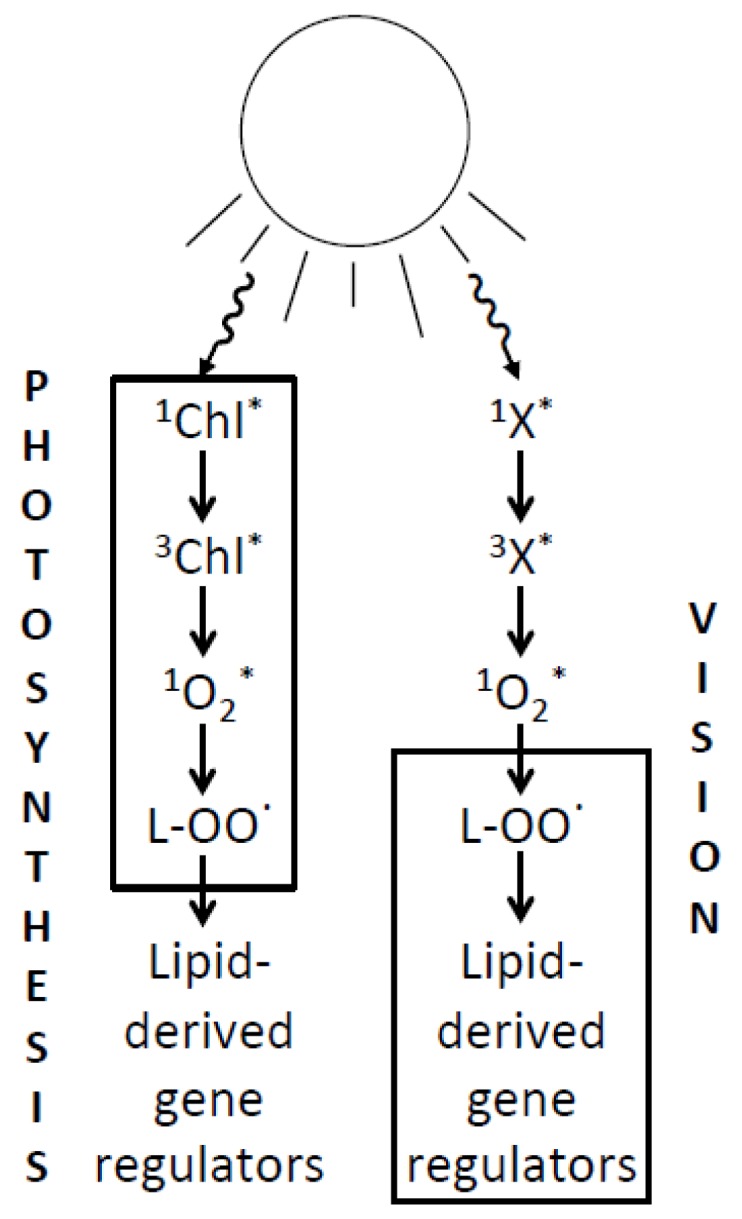Figure 2.

Comparison of photosynthesis and vision with respect to the principal steps in the series of reactions from light absorption, by various chromophores, to transfer of excitation energy to singlet oxygen (1O2*) resulting in lipid peroxidation and formation of lipid-derived gene regulators. Light absorption occurs in chlorophyll (Chl)-antenna-protein complexes in photosynthesis, and in retinal-opsin-complexes in vision. Triplet excited chlorophyll (3Chl*) is known to act as the photosensitizer in photosynthesis, passing excitation energy to oxygen, thus forming singlet oxygen. The nature of the photosensitizer in vision (X) is currently under debate. In contrast to protein-bound Chl, opsin-bound retinal does not produce singlet oxygen. However, there is current debate that, once released from opsin, all-trans retinal absorbs another photon and may give rise to singlet oxygen formation (see, e.g., [78]). The boxes around the different phases of the reaction series serve to indicate where research focus has previously been placed.
